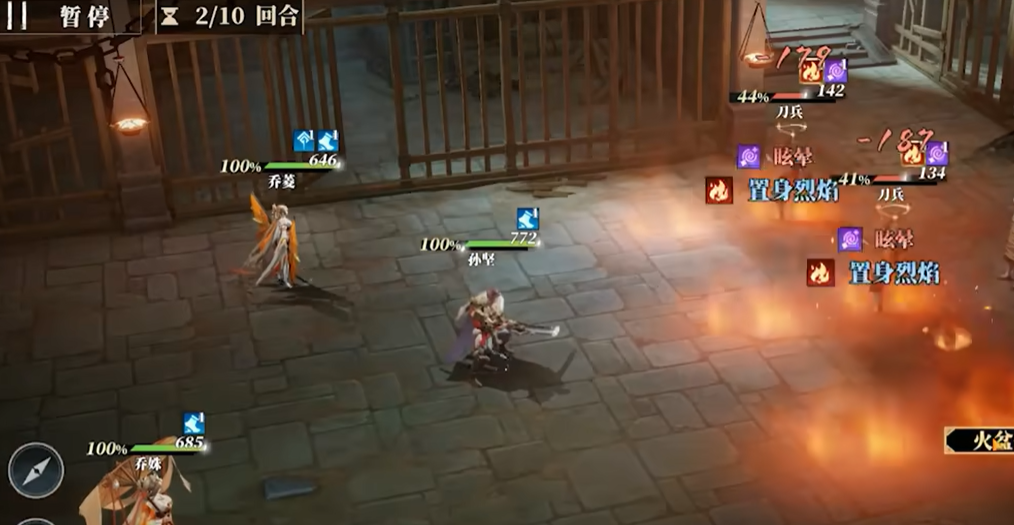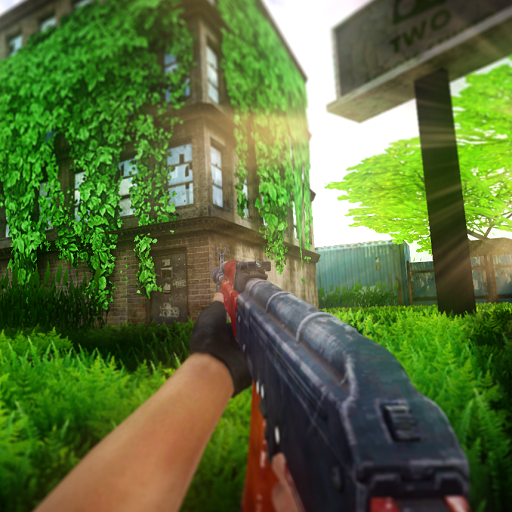In Civilization VII, regional planning has always been one of the core strategies in the Civilization series. Compared to previous versions, the "regions" have now been renamed as "districts." So, what types of districts are there in Civilization 7, and how should they be planned? This article will introduce this concept and the corresponding system rules. As the first step towards advanced play, let's take a look together.
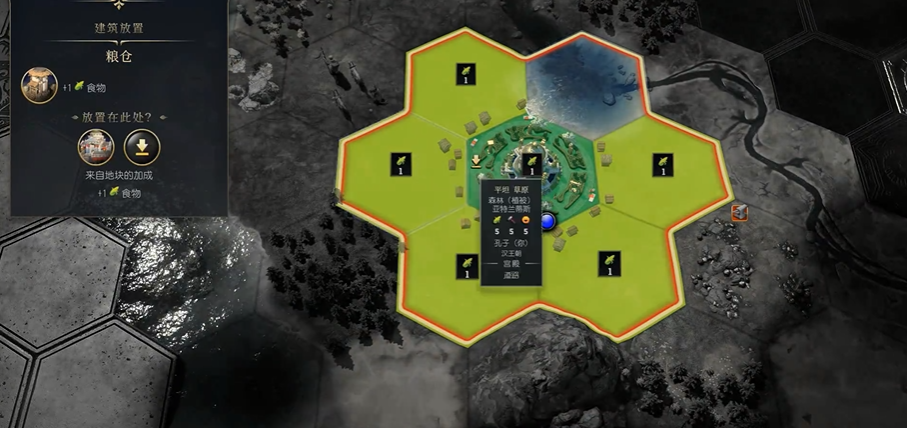
[biubiu Accelerator] Latest Version Download
>>>>>#biubiu Accelerator#<<<<<<
A district is composed of multiple buildings. Once your capital is established, it automatically receives a palace as your first building. Similar to the past concept of regions, once a building is constructed in a cell, that cell automatically becomes a district. It's important to note that once a district enters the construction phase, the original yield of the cell is replaced by the district's yield. Therefore, even the location of the city center cannot retain its original land characteristics. Based on this rule, no district, including the city center, can be built on any resource.
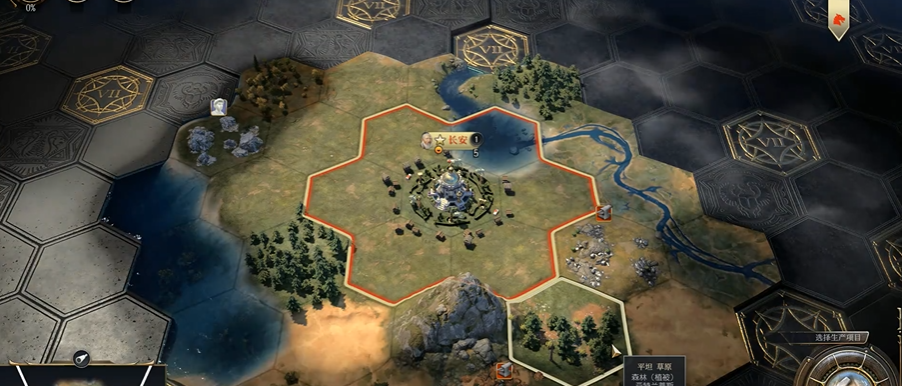
One major difference from previous versions is that all districts in Civilization VII can be purchased with money at the start of the game. Additionally, each district, including the palace or town hall, can accommodate up to two buildings, meaning you don't need to find separate cells for new buildings. The game design encourages placing buildings adjacent to each other, as specific buildings placed next to each other can form powerful specialized districts.

Once a district is built, the settlement it belongs to will receive the benefits of all surrounding cells. Buildings cannot be canceled once construction begins, and they cannot be removed after completion. Buildings are mainly divided into two categories: bonus buildings and storage buildings.

Storage buildings aim to increase the yield output of the corresponding plots of the settlement they belong to. For example, the granary, which can be unlocked at the beginning, will increase the food output of all cells that can build farms and plantations by one point once it is built. Storage buildings can be constructed in cities or towns. In addition to the granary, storage buildings such as sawmills and brick factories can also boost the productivity of logging camps, quarries, and mines, helping the city develop rapidly. Although storage buildings themselves do not generate yields, they significantly enhance the yields of various improvements in the settlement, forming a natural complement with town settlements. For example, a town dedicated to providing food for another city only needs to build a granary and focus on improving farmland cells; while a town aimed at providing more money can choose to build a sawmill and focus on improving forest or hill cells.
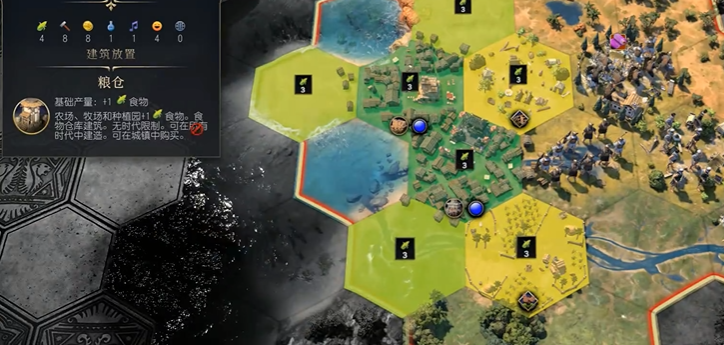
Basic resources can be produced by storage buildings, but advanced resources such as science points and culture points depend on bonus buildings. Except for religious bonus buildings that provide happiness points, all other bonus buildings can only be built in settlements with city status. These buildings do not have the ability to improve cells, but they produce various points, bringing significant benefits to the civilization. The palace, academy, theater, and library are all examples of bonus buildings. They not only have fixed outputs but also unique adjacency bonuses, rather than the general adjacency bonuses in previous versions. For example, if a palace is adjacent to a district with two buildings, it can gain one science point and one culture point; while an academy needs to be near resources to gain science points, no longer limited to being near mountains. All adjacency properties of bonus buildings are explained in their descriptions, and expected outputs can be previewed on the map before construction.
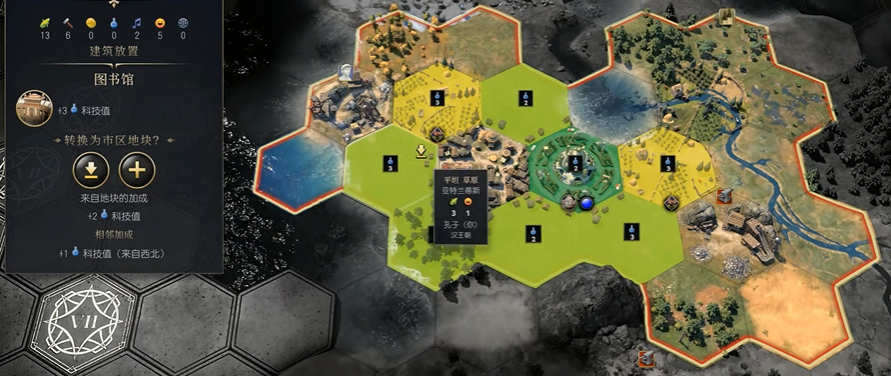
Of course, if you suddenly encounter unexplained lag during construction, or even the inability to upgrade buildings, it may be due to poor network conditions. Using the biubiu accelerator will solve this problem. Now, upon first registration, you can activate 3 hours of experience time. If that's not enough, using one [ biubiu no disconnection ] can give you an additional 72 hours, stacking up to a maximum of 75 hours.

Finally, two key points need to be emphasized. First, except for the city center, all districts must be connected to another district to be constructed, and cannot be directly built on a cell. The adjacent district can be another building or the city center itself. Therefore, cities need to plan their development routes in advance to maximize benefits. Second, except for storage buildings, all intermediate buildings, including academies, libraries, theaters, altars, and markets, will immediately lose their function and stop producing points when entering the next era (unless a specific Golden Age bonus is chosen). Although the building models and their districts still exist, they no longer generate points. After entering a new era, the buildings in the district can be replaced by corresponding buildings of the new era to continue utilizing the adjacency bonuses. This detailed tutorial on the types and planning of Civilization 7 districts is now complete. Go ahead and try it out in the game.

